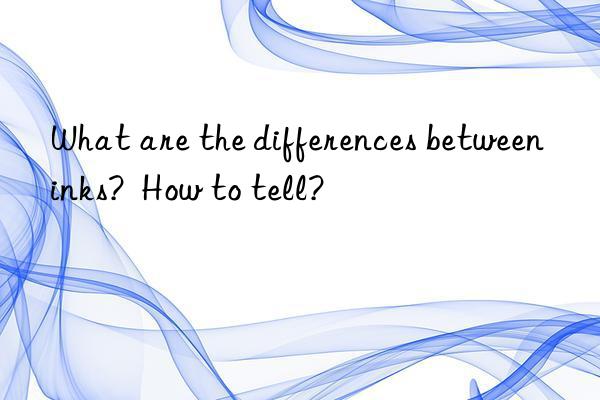
Ink The classification, identification characteristics, and use of ink ingredients and ink classification. Modern inks are mainly divided into four categories according to the format: ① Letterpress ink ② Lithographic ink ③ Gravure ink ④ Mesh ink Use and characteristics A type of ink used to print books, newspapers, albums, documents, account books, etc.
The main feature is that the inked part of the printing plate protrudes from the non-inked part. Letterpress inks are divided into lead printing inks, copper plate inks, letterpress rotary inks, and flexographic letterpress inks according to the type of printing machine and the use of printed products.
1. A type of ink suitable for lithographic printing. All parts of the lithographic printing layout are basically on a flat surface. The patterned parts are oil-wet and the non-patterned parts are hydrophilic. The principle of oil-water repulsion is used for printing, so lithographic ink must have water-resistant properties. According to the process, it is divided into offset printing ink, web offset printing ink, flat offset printing ink, waterless offset printing ink, iron printing ink, lithographic ink, and Co? plate ink.
2. A type of ink suitable for gravure printing. During printing, the pattern portion recessed in the layout is filled with ink, and the ink in the non-pattern portion is wiped off or scraped clean before printing. There are engraving gravure inks and photogravure inks. A type of ink that leaks through the mesh of the printing plate onto the printing surface for printing. Mesh printing ink is divided into writing ink and screen printing ink.
The ink manufacturing process can be divided into two stages: stirring pre-dispersion and grinding fine dispersion. The former stirs the prepared pigments and binders into a slurry in a container; the latter still needs to be ground and finely dispersed in the stirred slurry, and greater mechanical pressure and shear force are used to overcome the cohesion of the pigments, and finally Becomes suspended colloidal ink. Ink composition To ensure that the ink meets environmental protection requirements, the composition of the ink should first be changed, that is, new ink should be formulated with environmentally friendly materials. At present, environmentally friendly inks mainly include water-based inks, UV inks, water-based UV inks and some alcohol-soluble inks.
(1) Water-based ink
The biggest difference between water-based ink and solvent-based ink is that the solvent used is water instead of organic solvent, which can significantly reduce VOC emissions and prevent air pollution. Does not affect human health, is not easy to burn,
has stable ink properties, bright colors, does not corrode the plate, is simple to operate, is cheap, has good post-printing adhesion, strong water resistance, and dries quickly, so it is especially suitable for food and beverages , medicine and other packaging printed materials, it is a world-recognized environmentally friendly printing material. It is also the only ink among all printing inks currently approved by the American Food and Drug Association.
(2) Ultraviolet light curing ink
Ultraviolet light curing (UV) ink refers to ink that uses ultraviolet light of different wavelengths and energies to form a film and dry the ink under ultraviolet irradiation. Different UV spectra can be used to generate different energies to polymerize monomers in different ink binders into polymers, so the color film of UV ink has good mechanical and chemical properties. The main advantages of UV ink are: (1) no solvent required; (2) fast drying and low energy consumption; (3) good gloss and bright colors; (4) water and solvent resistance, and good wear resistance. The photoinitiator in UV ink is a compound that is easily excited by light. It is excited into free radicals after absorbing light, and the energy is transferred to photosensitive molecules or photocrosslinking agents, causing the UV ink to undergo a photocuring reaction. At present, UV ink has become a relatively mature ink technology, and its pollutant emissions are almost zero. In addition to being solvent-free, UV ink also has the advantages of not being easy to paste, clear dots, bright and bright ink colors, excellent chemical resistance, and low consumption.
(3) Water-based UV ink
Water-based UV ink is the new direction of current research in the field of UV ink. The viscosity of the prepolymer in ordinary UV ink is generally very high, and reactive diluents need to be added to dilute it. The diluents currently used, acrylate compounds, have varying degrees of skin irritation and toxicity. Therefore, while developing low-viscosity prepolymers and low-toxicity reactive diluents, another development direction is to study water-based UV inks, that is, water-based UV inks. and ethanol as diluents. At present, water-based UV ink has been successfully developed and used in some printing.


 微信扫一扫打赏
微信扫一扫打赏

